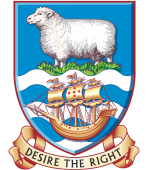Dr. Jorge E. Ramos Castillejos
Scientific Team

Miscellaneous Information
Background & Qualifications
I am a marine biologist with a BSc from the Autonomous University of Baja California Sur (UABCS, Mexico, 2005), a MSc in the Use, Management, and Conservation of Natural Resources from the Northwest Biological Research Centre (CIBNOR, Mexico, 2007), and a PhD in Natural and Physical Sciences with a strong component in quantitative marine science from the Institute for Marine and Antarctic Studies at the University of Tasmania (IMAS-UTAS, Australia, 2015).
During the early years of my career, I worked on a broad range of biological groups, including benthos, zooplankton, cephalopods, bony fishes, elasmobranchs, and marine mammals. Over time, I developed a great interest in squids and octopuses, which led me to focus on cephalopods. For my MSc, I investigated the distribution and abundance of jumbo squid (Dosidicus gigas) paralarvae off the Baja California Peninsula. Later I worked as a technical officer at CIBNOR and for Stanford University, contributing to joint projects on the reproductive biology, age and growth, movement patterns, and use of habitat of the jumbo squid. For my PhD, I used the range-shifting common Sydney octopus (Octopus tetricus) as a model species to examine how life-history characteristics and population dynamics relate to the capacity of marine species to shift their distribution in response to oceanic warming. In 2016, I was appointed as an Adjunct Researcher at IMAS-UTAS, where I conducted qualitative vulnerability assessments of climate change impacts on fishery species. In 2018, I joined the Falkland Islands Fisheries Department as a Stock Assessment Scientist, where I am responsible for assessing finfish stocks in a multi-species industrial bottom trawl fishery.
Research interests
My research interests include stock assessment, fisheries science, life-history and population dynamics, as well as population genetics, molecular ecology, invasion ecology, the impacts of environmental variability and climate change on marine species, and adaptation to climate change.
Publications
Maureaud AA, Kitchel Z, Fredston A, Guralnick R… Ramos JE, et al. (2025) FISHGLOB: A collaborative infrastructure for marine science and management. Conservation Science and Practice: e70035. https://doi.org/10.1111/csp2.70035
Ramos JE, Roura A, Strugnell JM, Moltschaniwskyj NA, Bargiela R, Pecl GT (2023) Stomach content characterisation of the marine range-shifting Octopus tetricus using DNA metabarcoding. Marine Ecology Progress Series 717: 67–83. https://doi.org/10.3354/meps14372
Ramos JE, Tam J, Aramayo V, Briceño FA, Bandin R, et al. (2022) Climate vulnerability assessment of key fishery resources in the Northern Humboldt Current System. Scientific Reports 12: 4800. https://doi.org/10.1038/s41598-022-08818-5
Maureaud AA, Frelat R, Pécuchet L, Shackell N, … Ramos JE, et al. (2020) Are we ready to track climate-driven shifts in marine species across international boundaries? - A global survey of scientific bottom trawl data. Global Change Biology 27: 220–236. https://doi.org/10.1111/gcb.15404
Sauer W, Gleadall IG, Downey-Breedt N, Doubleday Z, … Ramos JE, et al. (2019) World Octopus Fisheries. Reviews in Fisheries Science & Aquaculture. https://doi.org/10.1080/23308249.2019.1680603
Ramos JE, Pecl GT (2019) Climate Change. Marine range shifts in SE Australia. Austral Ecology. https://doi.org/10.1111/aec.12726
Ramos JE, Pecl GT, Moltschaniwskyj NA, Semmens JM, Souza CA, Strugnell JM (2018). Population genetic signatures of a recent marine range extension. Scientific Reports 8: 9558. https://doi.org/10.1038/s41598-018-27351-y
Ramos JE, Ramos-Rodríguez JA, Bazzino Ferreri G, Kurczyn JA, Rivas D, Salinas-Zavala CA (2017). Characterization of the northernmost spawning habitat of Dosidicus gigas with implications on its northwards range extension. Marine Ecology Progress Series 572: 179–192. https://doi.org/10.3354/meps12140
Ramos JE, Pecl GT, Semmens JM, Strugnell JM, León RI, Moltschaniwskyj NA (2015). Reproductive capacity of a marine species (Octopus tetricus) within a recent range extension area. Marine and Freshwater Research 66: 999–1008. https://doi.org/10.1071/MF14126
Rodhouse PGK, Pierce GJ, Nichols OC, Sauer WHH,… Ramos JE, et al. (2014). Environmental effects on cephalopod population dynamics: Implications for management of fisheries. In: Advances in Marine Biology. Advances in Cephalopod Science: Biology, Ecology, Cultivation and Fisheries. Vol. 67, Vidal EAG (ed). pp 140–145. Academic Press, London. https://doi.org/10.1016/B978-0-12-800287-2.00002-0
Ramos JE, Pecl GT, Moltschaniwskyj NA, Strugnell JM, León RI, Semmens JM (2014). Body size, growth and life span: Implications for the polewards range shift of Octopus tetricus in South-eastern Australia. PLoS ONE 9: e103480. https://doi.org/10.1371/journal.pone.0103480
Granados-Amores J, Ramos JE, Salinas-Zavala CA, Camarillo-Coop S (2013). Eucleoteuthis luminosa (Cephalopoda: Ommastrephidae) off the west coast of the Baja California peninsula, Mexico. Journal of Shellfish Research 32: 341–346. https://doi.org/10.2983/035.032.0212
Ramos-Castillejos JE, Salinas-Zavala CA, Camarillo-Coop S, Enríquez-Paredes LM (2010). Paralarvae of the jumbo squid, Dosidicus gigas. Invertebrate Biology 129: 172–183. https://doi.org/10.1111/j.1744-7410.2010.00194.x
Bazzino G, Gilly WF, Markaida U, Salinas-Zavala CA, Ramos-Castillejos JE (2010). Horizontal migrations, vertical habitat utilization and diet of the jumbo squid (Dosidicus gigas) in the Pacific Ocean off Baja California Sur, México. Progress in Oceanography 86: 59–71. https://doi.org/10.1016/j.pocean.2010.04.017
Salinas-Zavala CA, Camarillo-Coop S, Mejía-Rebollo A, Rosas-Luis R, Ramos-Castillejos J, et al. (2006) Studies of the jumbo squid (Dosidicus gigas d’Orbigny, 1835) in Mexico: Fishery, ecology and climate. GLOBEC Report No. 24. Honolulu, Hawaii, USA. 35–41
Salinas-Zavala CA, Bazzino-Ferreri G, Camarillo-Coop S, Rosas-Luis R, Mejía-Rebollo A, Ramos-Castillejos JE (2010). El Calamar gigante Dosidicus gigas (D’Orbigny 1835). In: Dinámica del ecosistema pelágico frente a Baja California 1997–2007. Gaxiola-Castro G. & Durazo R (Eds.). SEMARNAT-INE-CICESE-UABC. 501 pp.
